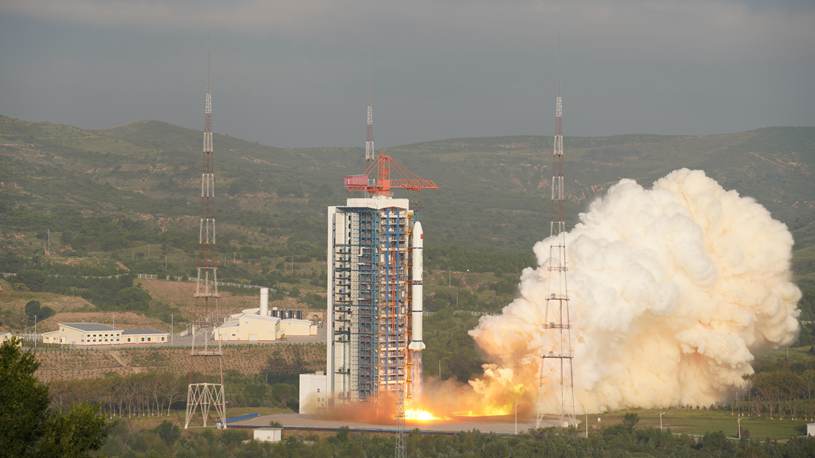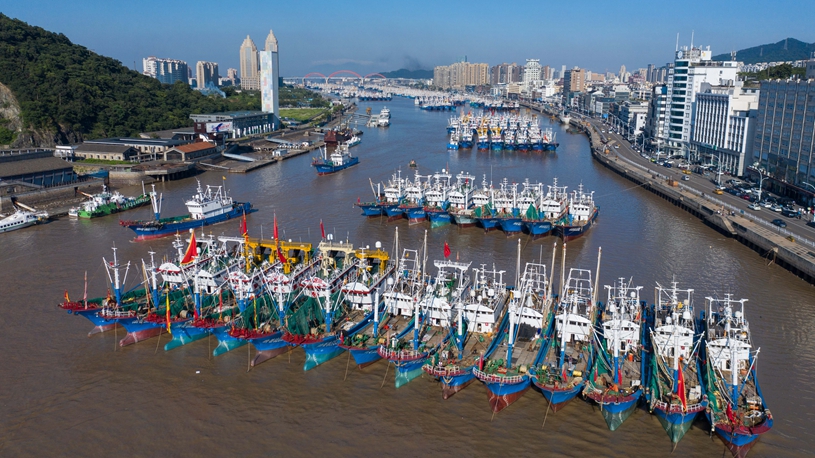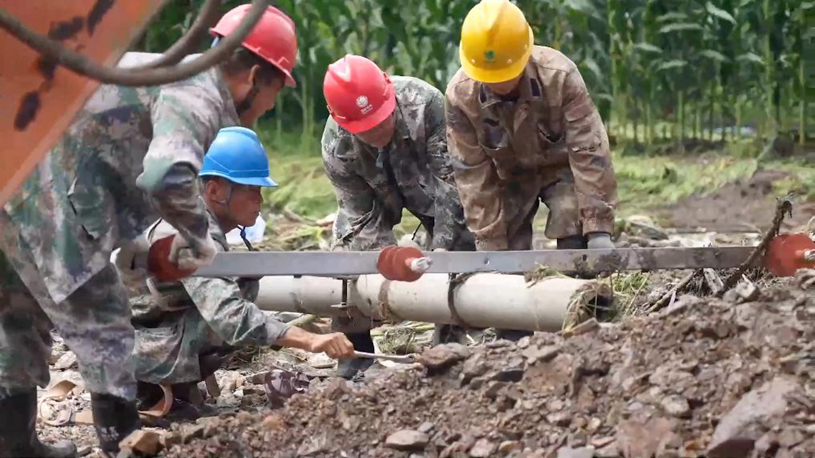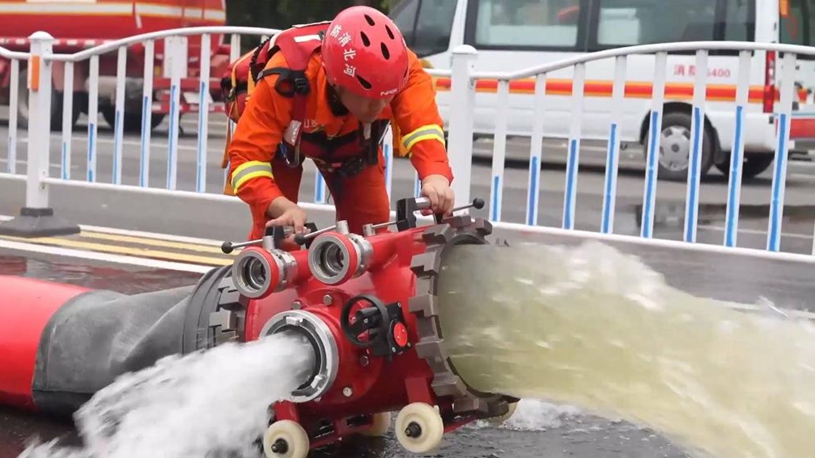* China's grain-producing province of Heilongjiang has been hit hard by floods.
* Due to the impact of Typhoon Doksuri, many paddy fields were flooded.
* Typhoon Khanun has brought a new spell of rainfall to the province as of Thursday.
HARBIN, Aug. 11 (Xinhua) -- Rice plants are beginning to form ears in northeast China's Heilongjiang Province, the country's top grain producer. However, due to the impact of Typhoon Doksuri, many paddy fields were flooded.
While still grappling with the consequences of the extreme rainfall caused by Typhoon Doksuri, Heilongjiang has activated a second-level emergency flood control response to cope with the impact of approaching Typhoon Khanun, according to the provincial meteorological authority. Typhoon Khanun has brought a new spell of rainfall to the province as of Thursday.
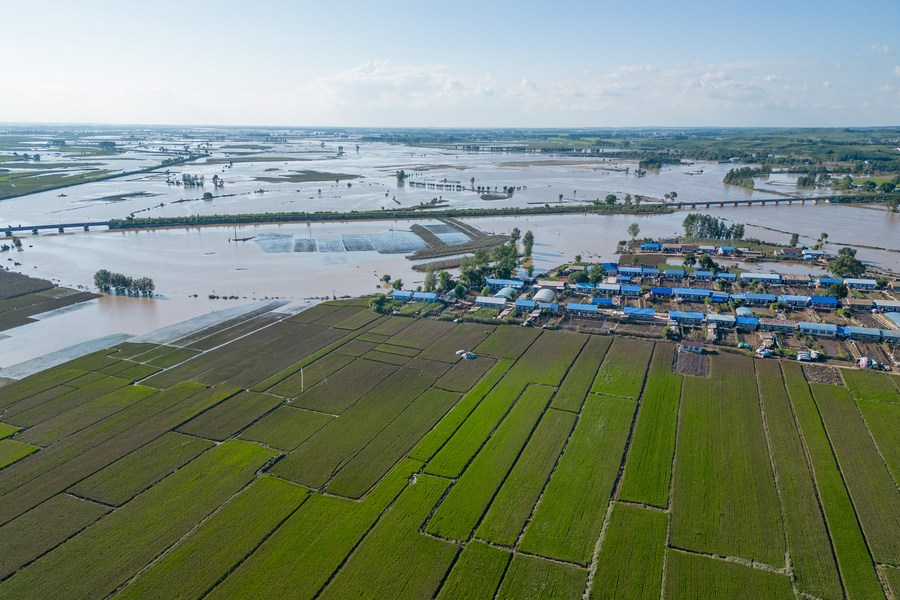
This aerial photo taken on Aug. 9, 2023 shows flooded paddy fields in Xingye Village of Anjia Town in Wuchang, northeast China's Heilongjiang Province. (Xinhua/Zhang Tao)
Wang Wei, an official of the provincial emergency management department, said reservoirs were required to increase their discharge to accommodate potential flood water.
Rain-soaked fields, affected by Typhoon Doksuri since Aug. 2, have raised concerns of drowning crops and lower yields in the province, which has remained China's top grain producer for 13 consecutive years.
Water conservancy experts warned that strong precipitation had already raised rivers' water levels, while the soil is saturated with water.
The grain-producing province has been hit hard by the flood disaster. The provincial agriculture and rural affairs department and the provincial academy of agricultural sciences have sent experts to help farmers minimize losses.
The province has also dispatched at least 530 agricultural machinery service teams, 116,900 disaster-relief personnel, 22,322 sets of machines and tools, and 4,148 water pumps to aid water drainage work in crop-growing areas. So far, 1.95 million mu (130,000 hectares) of crop fields have been saved.

This photo taken on Aug. 10, 2023 shows the intelligent control devices for water supply in a modern agricultural industrial park in Wuchang, northeast China's Heilongjiang Province. (Xinhua/Zhang Tao)
Heilongjiang boasts grain growing areas amounting to more than 200 million mu. Yellow water pumping trucks can be seen in flooded fields, while excavators are being used to dig channels in fields to help with drainage.
In the city of Wuchang, Ai Houbao, a rice grower who had been evacuated to a nearby shelter site during the heavy downpours, returned to his home to check on his house and paddy field after the flood receded.
Wuchang, famous for Wuchang rice, is known as the main production area of high-quality rice in Heilongjiang. Since Aug. 2, large and medium-sized reservoirs in the city have begun to see water exceed flood-limit levels.
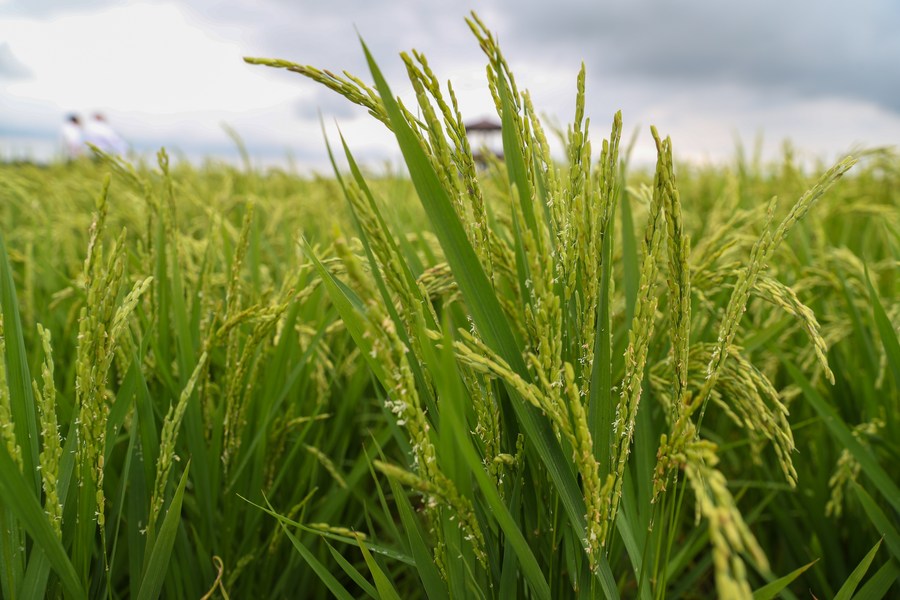
This photo taken on Aug. 10, 2023 shows rice seedlings in a modern agricultural industrial park in Wuchang, northeast China's Heilongjiang Province. (Xinhua/Zhang Tao)
"My rice field has been flooded. It was only two months away from harvesting," he said.
Wuchang has set up 68 resettlement sites and relocated 53,699 people from 138 villages.
"The flood entered the village on Aug. 4, inundating large areas of farmland," said Chen Guoliang, an official in Lianhua Village, Wuchang.
He said since the flood receded, villagers have been making intense efforts to drain out water. "The more water that can be pumped out, the more rice we can save."
Ai Houbao said he had bought agricultural insurance, which would help him recover some losses. He earned more than 100,000 yuan (about 13,870 U.S. dollars) from the rice harvest last year.
"I hope the flood water can be pumped out soon. I will see then how much rice the land can produce," he said.
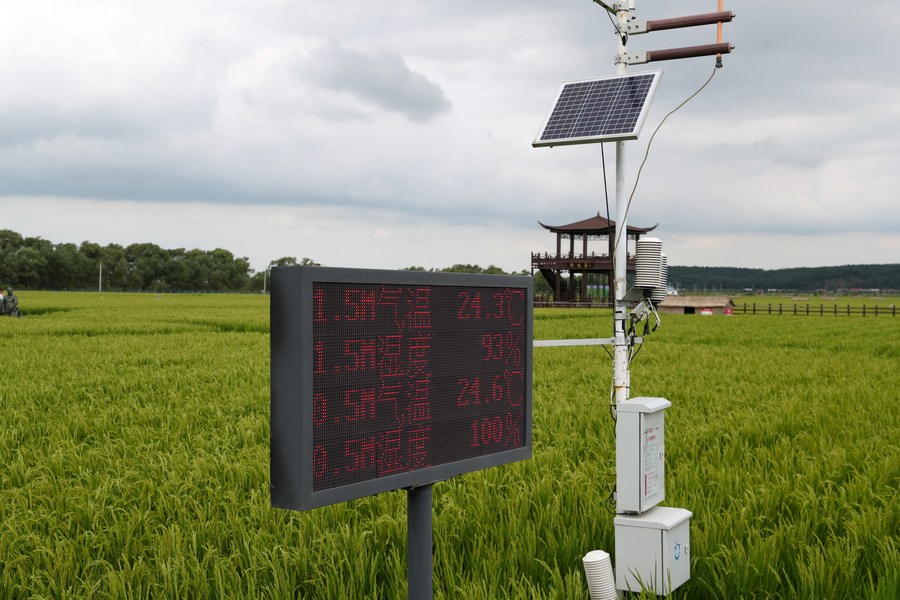
This photo taken on Aug. 10, 2023 shows meteorological monitoring devices in a modern agricultural industrial park in Wuchang, northeast China's Heilongjiang Province. (Xinhua/Zhang Tao)
As of Wednesday afternoon, Wuchang had recorded 1.51 million mu of flood-affected fields of rice, corn, soybean and other crops.
Li Yanjun, a plant protection researcher with the city's agricultural technology promotion center, said that despite the flooding, the rice output would not fall drastically compared with previous years, because a large area of rice in Wuchang is growing normally.
Heilongjiang produced about 77.63 billion kilograms of grain in 2022, accounting for 11.3 percent of the country's total.
(Video reporters: He Shan, Zhu Yue, Liu Heyao, Zhang Yue, Jin Di, Liu Haodong, Ma Xiaocheng, Ji Yang, Wei Meng, Wang Fan, Yan Linyun, Wang He, Zhang Tao, Si Xiaoshuai; Video editors: Hong Ling, Zheng Xin, Mu Xuyao, Zhao Xiaoqing) ■



